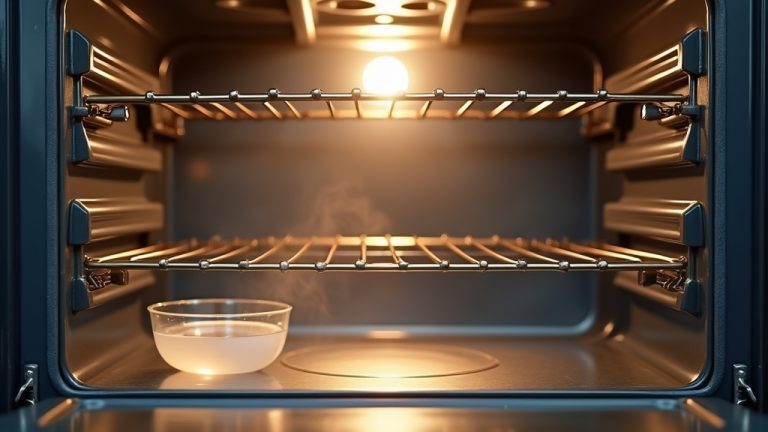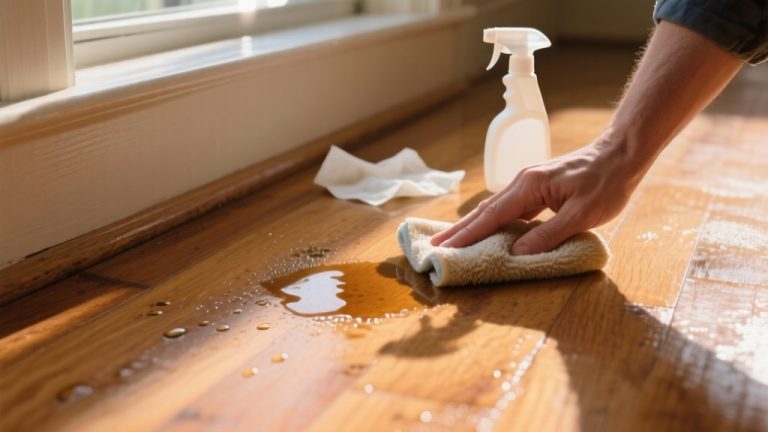Do Shower Gels Expire? Everything You Need to Know
Yes, shower gels do expire. Typically, unopened shower gels last 24–36 months, while opened ones remain stable for about 12 months.
Over time, ingredients can degrade, causing changes in color, texture, and scent, which reduce effectiveness and may cause skin irritation. Proper storage in cool, dry places slows spoilage.
Paying attention to expiration labels and product integrity helps guarantee safety. Keep in mind, understanding how to recognize and prevent shower gel spoilage further protects your skin health.
Key Takeaways
- Unopened shower gels typically last 24–36 months, while opened gels remain stable for 12–24 months under proper storage.
- PAO symbols (e.g., “12M”) indicate the safe usage period after opening the product.
- Signs of expiration include color changes, separation, clumpy texture, sour odors, and loss of lather.
- Exposure to heat, sunlight, and humidity accelerates degradation and microbial growth in shower gels.
- Using expired shower gel risks skin irritation, infections, and reduced cleansing effectiveness.
Understanding the Typical Shelf Life of Shower Gels
Although shower gels don’t always come with a clearly marked expiration date, understanding their typical shelf life helps you use them safely and effectively. Proper storage and routine inspection are key to avoiding product degradation.
Generally, unopened shower gels last between 24 to 36 months when stored properly, often in cool, dry places away from sunlight. Keeping products away from sources of salt or moisture can also help preserve their quality.
Unopened shower gels typically remain fresh for 24 to 36 months when kept cool and dry.
Once opened, their quality typically remains stable for 12 to 24 months. Many brands include a period-after-opening (PAO) symbol, like “12M,” indicating safe usage duration post-opening.
You can also check batch codes or manufacturing dates for additional guidance. To maintain effectiveness and safety, monitor your shower gel for changes in color, texture, or scent, and replace it within these timeframes.
Proper storage and timely use ensure you avoid degradation and potential skin irritation from expired products. Exposure to moisture and humidity can accelerate product spoilage by promoting bacterial growth.
Factors That Influence Shower Gel Longevity
When it comes to shower gel, the ingredients you find in it can really impact how long it lasts. You’ll notice that natural components usually don’t hold up as well as synthetic ones. So, if you prefer a more natural product, just keep in mind that it mightn’t stick around as long.
Now, let’s talk about storage. This is super important! Keeping your shower gel in a place that’s too hot, too bright, or too humid can speed up the breakdown of those ingredients and even lead to unwanted microbial growth.
Manufacturers often perform stability tests to ensure the product remains safe and effective over its intended shelf life. Proper storage in cool, dry conditions helps prevent degradation and contamination.
To keep your gel at its best, try to store it in a cool, dry spot. This way, you can help maintain its stability and extend its shelf life.
Ingredient Composition Impact
When evaluating shower gel longevity, you must consider the ingredient composition. The balance between synthetic and natural components considerably affects stability and shelf life.
Synthetic ingredients like SLS, SLES, and phenoxyethanol generally provide greater stability and longer shelf lives than natural extracts or essential oils, which degrade faster.
Preservatives are essential; without adequate levels, especially in water-based formulas, microbial contamination risks increase sharply. Products containing water are susceptible to mold and bacteria without preservatives, making preservation strategies crucial.
Formulations with emollients such as coconut or olive oil can turn rancid within a year if not properly preserved. Proper maintenance and storage, including keeping the product in a cool, dry place, can significantly extend its usability.
Additionally, ingredient interactions, including surfactants, thickeners, and pH modifiers, impact product homogeneity and efficacy over time.
High water content further elevates spoilage potential, necessitating robust preservation tailored to the ingredient profile.
Understanding these factors helps you better gauge shower gel durability. Regular inspection and gentle cleansing practices, similar to those recommended for unlacquered brass, can help maintain product quality over time.
Storage Conditions Effects
Because storage conditions directly influence the chemical stability and microbial safety of shower gels, understanding how factors like temperature, humidity, light exposure, air contact, and container integrity affect product longevity is essential.
Using shower gels beyond their expiration date can lead to skin irritation and bacterial contamination. You should store shower gels below 77°F (25°C) in cool, dry places and avoid direct sunlight to prevent ingredient degradation.
Keeping products in opaque containers helps protect the formulation from light and UV exposure. Keep caps tightly closed to minimize moisture and air entry, which promote microbial growth and oxidation.
Using airtight or pump containers further preserves the formulation by limiting exposure.
| Factor | Effect on Longevity | Recommended Action |
|---|---|---|
| Temperature | Accelerates breakdown at high heat | Store below 77°F (25°C) |
| Humidity | Promotes microbial growth | Keep cap closed, avoid damp areas |
| Light/UV Exposure | Degrades fragrance and ingredients | Store in opaque containers |
| Air Exposure | Causes oxidation and scent loss | Use pump dispensers, close tightly |
Recognizing When Shower Gel Has Gone Bad
Although shower gels often look stable, subtle changes can signal they’ve gone bad. You should watch for visual signs such as color fading, uneven hues, separation into layers, or cloudiness.
Proper storage in a cool, dry place away from humidity and heat can significantly prolong their freshness and effectiveness proper storage. Regular cleaning of bottles and dispensers can also prevent microbial growth that accelerates spoilage.
Mold, unusual specks, or sediment inside the bottle are clear spoilage indicators. Texture changes also matter; a gel that becomes watery, clumpy, or loses its original consistency suggests degradation. If your shower gel has been exposed to frequent temperature fluctuations, it may deteriorate faster due to ingredient breakdown.
If your shower gel doesn’t lather well or leaves no residue on the bottle walls when tipped, it may have expired. Pay attention to scent alterations—fading, sour, rancid, or off-putting odors indicate ingredient breakdown.
Physical signs like sticky residue on the cap, unusual bubbles, or leakage signify spoilage. Using expired gel can cause skin irritation, reduced cleansing, and decreased moisturizing effects, so discard at the first sign of deterioration.
Proper Storage Tips to Extend Shower Gel Life
To make your shower gel last longer, it’s a good idea to store it in airtight containers. Keeping it in a cool, dry place, away from heat and sunlight, can really help too. Oh, and don’t forget to always close the caps tightly! This prevents any contamination and helps keep those key ingredients from evaporating. Using containers with non-slip handles can also improve ease of use and reduce accidental spills during storage.
Also, try to minimize exposure to humidity. Organizing your gels properly can make a big difference in reducing degradation, which in turn helps preserve the quality of the product. Incorporating moisture absorbers like silica gel packets can further protect your shower gel by reducing ambient humidity impact.
Ideal Storage Conditions
When you store shower gels under controlled conditions, you substantially extend their shelf life and maintain formula integrity.
Keep your shower gel at room temperature (20-25°C) away from direct sunlight and moisture. Store it in a cool, dry place with a tightly sealed cap to prevent oxidation and microbial growth. Proper storage can extend the product’s usability and effectiveness. Prompt and gentle handling of any contamination is essential to avoid damage and maintain product quality.
Avoid heat, freezing, and humid environments to preserve active ingredients and texture.
| Storage Factor | Impact on Shower Gel |
|---|---|
| Temperature Control | Prevents ingredient breakdown |
| Light Exposure | Maintains fragrance and color |
| Humidity Management | Reduces microbial growth and separation |
Adhering to these conditions guarantees your shower gel stays effective and safe for longer, preserving its sensory and functional qualities.
Avoiding Contamination Risks
Proper storage conditions help maintain the quality of your shower gel, but preventing contamination requires additional care. Microbial growth often occurs when bacteria or fungi enter through repeated hand contact or improper refilling from bulk containers. It is also important to be aware that many personal care products can contain chemicals of concern which might affect health.
To extend your shower gel’s life and minimize contamination risks, follow these key guidelines:
- Always use pump dispensers instead of open jars to reduce hand contact.
- Never “top off” partially empty containers; clean and dry them thoroughly before refilling.
- Store your shower gel in a cool, dry place away from direct sunlight and humidity. Proper ventilation and temperature control are essential to prevent microbial growth in cosmetic products.
- Regularly clean dispenser nozzles with mild soap and water, allowing them to dry completely before use.
Adhering to these practices minimizes microbial contamination, preserves product integrity, and protects your skin from irritation or infection.
Manufacturer Recommendations and Expiration Labels
Although cosmetic products like shower gels aren’t legally required to display expiration dates in the US, many manufacturers provide clear recommendations and labeling to guide you on safe usage.
Most brands suggest using shower gel within 12 months after opening, indicated by the “Period After Opening” (PAO) symbol such as “12M” or “24M.” These guidelines stem from internal stability and microbial safety testing. It is important to check the expiration date printed on the bottle, typically found on the bottom or back.
While explicit expiration dates or “best before” markings aren’t mandatory, some products include them or batch codes you can decode online. Recommendations vary, especially for natural or organic shower gels, which often have shorter shelf lives. Proper storage conditions away from heat and humidity are essential to preserve product quality and safety.
Following manufacturer instructions, including proper storage away from heat and humidity, helps maintain product integrity and guarantees you use shower gel within its optimal period.
Safety Considerations for Using Expired Shower Gels
Manufacturers often recommend using shower gels within a specific timeframe to guarantee safety and effectiveness. Following these guidelines helps maintain product integrity and user safety.
Using them beyond this period can pose several risks. When you use expired shower gels, consider these safety concerns:
- Reduced cleansing efficacy due to degraded surfactants and preservatives, compromising skin hygiene. This deterioration is similar to how improper cleaning agents can lose effectiveness over time.
- Increased risk of skin irritation or allergic reactions from chemical changes and microbial contamination. Prolonged use may also lead to skin and scalp irritation, especially for sensitive skin types.
- Potential microbial growth in the product, leading to infections like folliculitis or dermatitis. This risk parallels concerns about microbial contamination when cleaning kitchen surfaces with inappropriate products.
- Physical changes such as discoloration, odor alterations, or texture separation indicating decreased safety.
Regularly inspect your shower gel for these signs to avoid adverse effects. Using expired products can harm your skin’s health and increase infection risks. It’s best to adhere to expiration guidelines for ideal safety.
Frequently Asked Questions
Can Expired Shower Gel Cause Infections or Skin Diseases?
Yes, expired shower gel can cause infections or skin diseases.
When preservatives degrade, bacteria, fungi, and molds can multiply in the product.
Using such contaminated gel may introduce harmful microbes into microscopic skin wounds, increasing risks of infections like folliculitis or impetigo.
Additionally, chemical breakdown can irritate your skin, weaken its barrier, and reduce cleansing efficacy, further exposing you to pathogens and aggravating skin conditions.
Avoid using expired shower gels to protect your skin health.
Are Shower Gels With Natural Ingredients Less Effective After Expiration?
Oh sure, your natural shower gel turns into a magical potion that suddenly stops working after expiration. Just kidding!
In reality, yes, these gels become less effective once expired. The natural ingredients degrade chemically, losing their cleansing power and fragrance.
Plus, without strong preservatives, microbial growth risks increase. So, you’ll notice diminished performance and potential safety concerns.
It’s best to toss expired natural shower gels and grab a fresh bottle.
How Do Preservatives in Shower Gels Affect Their Shelf Life?
Preservatives in shower gels considerably extend their shelf life by preventing bacterial, mold, and fungal growth.
You’ll find broad-spectrum preservatives like caprylyl glycol and ethylhexylglycerin that maintain product safety for 2-3 years unopened.
However, factors like storage conditions and packaging impact their effectiveness. Once opened, contamination risks rise, so preservative protection weakens over time.
This usually limits use to 6-12 months after opening for ideal safety and performance.
Is It Safe to Use Shower Gel Past the Printed Expiration Date?
It’s generally unsafe to use shower gel past its printed expiration date. After this date, preservatives lose effectiveness, increasing bacterial growth risks and potential skin irritation.
You might notice changes like odor, texture, or color, signaling spoilage. Even if it looks fine, expired gels can cause allergic reactions or infections.
To protect your skin, always discard shower gels once expired or showing any signs of degradation, ensuring safe and effective use.
Can Expired Shower Gel Damage Bathroom Surfaces or Fixtures?
You won’t harm your bathroom surfaces or fixtures by using expired shower gel. Its ingredients don’t become corrosive or produce harmful byproducts that damage ceramic, glass, metal, or plastic.
While expired gel might thicken or leave more residue, this is mainly cosmetic and won’t accelerate wear or cause structural damage.
Just be prepared for potentially more frequent cleaning to maintain appearance, but safety and integrity remain intact.
Keep Your Skin Safe—Know When Your Shower Gel Expires
Think of your shower gel like a delicate clock. Its effectiveness ticks down over time. By understanding its typical shelf life and factors that influence longevity, you can better recognize when it’s past its prime.
Proper storage and paying attention to expiration labels help keep your gel safe and effective. Using expired products isn’t worth the risk, so stay informed and treat your shower gel with the care it deserves to maintain hygiene and skin health.







